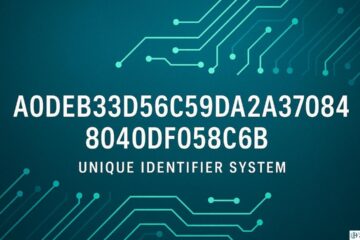What Is the OSI Model?
The OSI model is a conceptual framework that defines how different networking protocols and technologies interact to facilitate communication between devices on a network. It was developed by the International Organization for Standardization (ISO) in the late 1970s as a reference model for understanding and designing network architectures.
The OSI (Open Systems Interconnection) model consists of seven layers, each responsible for specific functions in the network communication process. These layers are designed to work together harmoniously, providing a structured approach to network design, troubleshooting, and standardization. In this article, we will provide a simple explanation of the OSI model and its seven layers.
The 7 Layers of the OSI Model Explained
The OSI (Open Systems Interconnection) model consists of seven layers, each responsible for specific functions. Let’s explore each layer of the OSI model:

Layer 1: The Physical Layer
The Physical Layer is the lowest layer of the OSI model. It deals with the physical transmission of data over the network. Some key points about the Physical Layer include:
- Responsibilities: This layer is responsible for the transmission and reception of raw bit streams over physical media such as cables, connectors, and network interfaces.
- Data Units: The data unit at this layer is referred to as bits.
- Examples: Ethernet cables, optical fibers, and wireless transmission technologies operate at this layer.
Layer 2: The Data Link Layer
The Data Link Layer provides a reliable link for data transfer between two directly connected nodes. Some key points about the Data Link Layer include:
- Responsibilities: This layer is responsible for error detection and correction, as well as flow control.
- Data Units: The data unit at this layer is referred to as frames.
- Examples: Ethernet switches and wireless access points operate at this layer.
Layer 3: The Network Layer
The Network Layer enables the routing of data packets across different networks. Some key points about the Network Layer include:
- Responsibilities: This layer handles logical addressing, packet forwarding, and determining the best path for data transmission.
- Data Units: The data unit at this layer is referred to as packets.
- Examples: Routers and layer 3 switches operate at this layer.
Layer 4: The Transport Layer
The Transport Layer ensures the reliable delivery of data between hosts. Some key points about the Transport Layer include:
- Responsibilities: This layer provides end-to-end error recovery, flow control, and retransmission of lost data.
- Data Units: The data unit at this layer is referred to as segments (for TCP) or datagrams (for UDP).
- Examples: TCP (Transmission Control Protocol) and UDP (User Datagram Protocol) operate at this layer.
Layer 5: The Session Layer
The Session Layer establishes, manages, and terminates communication sessions between applications on different devices. Some key points about the Session Layer include:
- Responsibilities: This layer handles session establishment, synchronization, and termination, ensuring that data flows smoothly between applications.
- Data Units: The data unit at this layer is referred to as dialogs, conversations, or sessions.
- Examples: NetBIOS (Network Basic Input/Output System) and PPTP (Point-to-Point Tunneling Protocol) operate at this layer.
Layer 6: The Presentation Layer
The Presentation Layer is responsible for data representation and encryption. Some key points about the Presentation Layer include:
- Responsibilities: This layer translates data from the Application Layer into a format that can be understood by the network. It handles tasks such as data compression, encryption, and decryption.
- Data Units: The data unit at this layer is referred to as data formats.
- Examples: MIME (Multipurpose Internet Mail Extensions) for email and SSL/TLS (Secure Sockets Layer/Transport Layer Security) for secure communication operate at this layer.
Layer 7: The Application Layer
The Application Layer is the topmost layer of the OSI model. It provides network services directly to end-user applications. Some key points about the Application Layer include:
- Responsibilities: This layer handles tasks such as file transfer, email services, web browsing, and other application-specific functions.
- Protocols: Protocols operating at this layer include HTTP (Hypertext Transfer Protocol), FTP (File Transfer Protocol), SMTP (Simple Mail Transfer Protocol), and DNS (Domain Name System).
- Data Units: The data unit at this layer is referred to as messages, requests, or commands.
Benefits of the OSI Model
The OSI (Open Systems Interconnection) model offers significant benefits for understanding and designing network protocols and technologies. Here are the key advantages of the OSI model:
- Modularity and Layered Approach: The OSI model breaks down network communication into seven distinct layers, enabling easier understanding, troubleshooting, and development. Each layer has specific functions, allowing independent updates without affecting others and promoting flexibility and scalability.
- Interoperability: The layered structure of the OSI model promotes compatibility between vendors, systems, and protocols. Well-defined functions and interfaces facilitate integration of new technologies, enabling communication between diverse devices.
- Standardization: Standardized protocols and interfaces at each layer ensure seamless interoperability among network components. This simplifies development, implementation, and maintenance, while industry-wide guidelines and best practices are established.
- Troubleshooting and Network Management: The layered structure aids in pinpointing network issues. Each layer’s specific functions allow isolation and analysis of problems without disrupting other layers, streamlining troubleshooting and enhancing network management.
- Education and Conceptual Understanding: The OSI model serves as an educational tool, providing a common language for network professionals. Its layered approach simplifies complex concepts, aiding comprehension and effective communication.
- Future-Proofing: The OSI model is adaptable to future advancements. Its layered structure allows for the addition or modification of layers to accommodate emerging technologies, ensuring continued growth and development of networks.
The OSI model’s modularity, interoperability, standardization, troubleshooting, educational value, and future-proofing make it invaluable for network professionals. It provides a structured and standardized framework for comprehending network communication, facilitating the design of robust and scalable network systems.
OSI vs. TCP/IP Model
The OSI (Open Systems Interconnection) model and the TCP/IP model are two different but related conceptual frameworks used to understand and describe network protocols and technologies. While they serve similar purposes, there are some key differences between the two models. Let’s explore the OSI model and the TCP/IP model and compare them.
The OSI Model
The OSI model is a conceptual framework that was developed by the International Organization for Standardization (ISO) in the late 1970s. It consists of seven layers, each with its specific functions and responsibilities. The layers of the OSI model, from bottom to top, are:
- Physical Layer: Deals with the physical transmission of data over the network.
- Data Link Layer: Provides a reliable link for data transfer between directly connected nodes.
- Network Layer: Enables the routing of data packets across different networks.
- Transport Layer: Ensures reliable delivery of data between hosts.
- Session Layer: Establishes, manages, and terminates communication sessions between applications.
- Presentation Layer: Handles data representation and encryption.
- Application Layer: Provides network services directly to end-user applications.
The OSI model provides a layered approach to network design, implementation, and troubleshooting. It promotes modularity, interoperability, and standardization in networking.
The TCP/IP Model
The TCP/IP (Transmission Control Protocol/Internet Protocol) model is another conceptual framework that has been widely adopted as the basis for the modern Internet. It is based on the protocols that were developed for the early ARPANET (Advanced Research Projects Agency Network). The TCP/IP model consists of four layers, which are often referred to as a merged or simplified version of the OSI model. The layers of the TCP/IP model, from bottom to top, are:
- Network Interface Layer: Handles the physical transmission of data and includes protocols for accessing the network media.
- Internet Layer: Deals with logical addressing, routing, and fragmentation of data packets.
- Transport Layer: Provides reliable data delivery and includes protocols such as TCP and UDP.
- Application Layer: Encompasses all the higher-level protocols and applications that directly interact with users.
While the TCP/IP model is less granular compared to the OSI model, it still covers the essential aspects of network communication.
Comparing OSI and TCP/IP Models
Here are some key points of comparison between the OSI model and the TCP/IP model:
- Number of Layers: The OSI model has seven layers, while the TCP/IP model has four layers.
- Granularity: The OSI model provides a more detailed and granular breakdown of network functions, while the TCP/IP model offers a more simplified view.
- Development Timeline: The OSI model was developed before the TCP/IP model and served as a reference for the early development of networking protocols.
- Widespread Adoption: While the OSI model is widely taught and used in academic and theoretical contexts, the TCP/IP model is more commonly used in real-world networking and internet implementations.
- Mapping to Each Other: The TCP/IP model can be loosely mapped to the OSI model. For example, the TCP/IP Network Interface Layer corresponds to the Physical and Data Link Layers of the OSI model, and the TCP/IP Internet Layer corresponds to the OSI Network Layer.
It’s worth noting that the TCP/IP model and the protocols associated with it are the foundation of the modern internet. The OSI model, on the other hand, provides a more comprehensive framework that allows for a deeper understanding of network protocols and technologies.
Conclusion
The OSI model, with its seven layers, provides a structured and organized framework for understanding network communication.
Each layer has its specific responsibilities, from the physical transmission of data to the interaction between applications and users.
Understanding the OSI model and its layers is fundamental for anyone involved in networking, as it helps in troubleshooting, designing networks, and ensuring compatibility between different protocols and technologies.
FAQs
Why Is the OSI Model Important in Networking?
The OSI model provides a standardized framework for understanding and designing networks. It helps in troubleshooting network issues, ensuring interoperability between different networking devices and protocols, and promoting modularity and standardization in network development.
How Does the OSI Model Relate to TCP/IP?
The OSI model and the TCP/IP protocol suite are two different but related concepts. The TCP/IP protocol suite is a set of protocols used for internet communication. It does not strictly adhere to the OSI model's seven-layer structure but can be mapped to the OSI layers for better understanding and comparison.
Can You Skip Layers in the OSI Model?
In theory, it is possible to skip certain layers in the OSI model. However, doing so would compromise the functionality and interoperability of the network. Each layer has specific responsibilities that contribute to the overall communication process, and omitting layers would disrupt the smooth flow of data.










